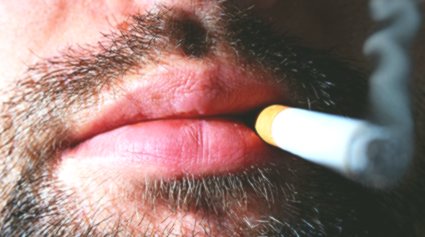
Oral cancer that affects any part of the mouth, occurring more frequently in the tongue and lips. It occurs after 40 years and affects more men than women, in a ratio of 2 to 1, although the distances between both sexes are shortening in recent years.
It is one of the few types of cancer that produces a symptom that allows its early diagnosis, although in many cases it is not too much attention, facilitating its evolution:
- Appearance of an injury, tumor or ulcer in any area of the mouth that frequently has a pale coloration, although it can also be dark. Its appearance may be that of a hard-edged fissure that initially does not cause discomfort, but when the cancer progresses it causes pain and burning sensation.
- Chewing problems
- Pain and difficulty swallowing.
- Speech difficulties
- Swollen lymph nodes in the neck.
- Weightloss.

Causes of oral cancer
Among the most important causes of oral cancer are alcohol consumption and smoking, although it can also occur as a result of an infection caused by specific types of human papillomavirus (HPV). Other factors that favor its appearance are the continuous friction of an object inside the mouth, such as removable dentures that are not properly adjusted.
However, it should be noted that there are preventive measures:
- Give up smoking.
- Limit alcohol consumption.
- A diet rich in fruits and vegetables.
- Proper oral hygiene.
- Go to the dentist regularly and treat any type of injury that may appear.
Oral Cancer Treatment
When oral cancer is in its initial phase, surgery is the most appropriate treatment, in combination with radiotherapy and chemotherapy. However, it ceases to be at the time that the involvement of the neck nodes occurs. The therapy can be completed with physiotherapy and speech therapy, aimed at recovering the functionality of the mouth.
If the diagnosis is early, the cure rate is very high (90%). Not so if it occurs in advanced stages, although half of the patients have a life expectancy greater than five years. The problem is that most of these cancers are detected when it has already spread to the throat and neck.